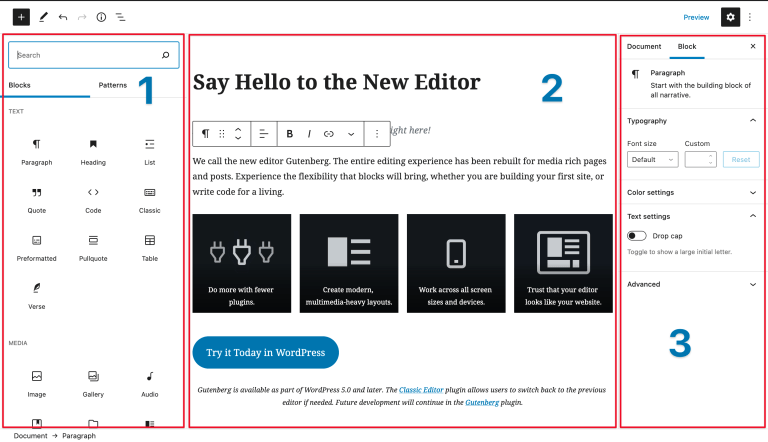
There are two primary ways to allow a corporation to receive funding: taking out loans or pulling in buyers. To expand, small companies also require money. Several sources may come from this financing. You should have a good business strategy and a straightforward overview of how you plan to spend the money before searching out funding.
You’ll just need to consider how you’re going to pay it back and that the company is a decent risk to investors. You may have a brilliant idea, but investors would want to hear about the administration of the company so that they can trust the business strategy and the persons behind it.
Also Read: Common Mistakes To Avoid When Starting A Small Business
An essential move in securing finance for your company is to decide the loan option that better matches your company’s needs. Here are four common types of successful loans from small businesses:
Long-term credits
Table of Contents
One of the most popular ways of lending is distributed by major commercial lenders. They are also used for the production, procurement, refinancing, or working capital of businesses. The organization would not have to spend a huge amount out of pocket with the help of a long-term loan. Instead, the required financing, which the corporation will pay back in fixed sums for several years, along with interest and penalties, will be given by a loan.
Also Read: Post-Pandemic Small Business Ideas For Women
Short-term credits
After the agreed-upon term, short-term advances are due in full, instead of providing recurring instalments. Most of these loans are used for shorter-term requirements: to build inventory, to raise cash for accounts payable, or to complete fast-returning small ventures, usually below 1 Lakh. Like supermarkets, they are precious for seasonal businesses and are sold through credit unions and banks.
Credit lines
Provides constant access to cash for the company as necessary. In general, the business line of lending is unsecured by equity and has competitive interest rates. It must have an outstanding credit record for a corporation to receive an unsecured business line of credit on preferential terms. An unsecured business line of credit is typically acquired from a commercial bank and is intended to satisfy the needs of fast cash. Until the corporation taps into the line of credit, no monthly charge is due.
Also Read: Tips To Safeguard Your Small Business Smartly
Financing options
For non-bank lending, there are many services available, such as cash advances and peer-to-peer loans services. This can be used to start a company, meet cash deficits, or finance small-scale growth. For a lender to present a persuasive kit, there are several useful moves:
- Identify the existing and requested sources of the fund and outline how they will be used directly.
- Provide any current company audits over the past five years and interim financial statements that indicate good cash flow. This good cash flow would demonstrate the ability to cover interest and principal payments on the debt.
- Understand the loan score. If there are problems with it, be able to discuss how you fix them.
Be sure to retain good touch with prospective lenders because understanding the industry model, the environment, and the product and the team behind it, as financial institutions analyze prospects for a small enterprise, is important. In turn, this allows the lender to send you the best advice to help grow your tiny company.
Also Read: MSMe & Small Business – Digital Transformation For Growth
Indifi Alternative Finance Option
Indifi is an online platform which gives access to capital to approved business owners, or you need funds to resolve cash flow deficits and pay your taxes, payroll, or purchase equipment if you’re looking to expand your business. So Indifi could be the solution for you, then.
Let’s take a detailed look at how Indifi operates to explain why your business loan could be a successful idea. Any things to note about Indifi are here:
Decision within hours:
In seconds, you can apply online and get a credit decision within hours. All you have to do is visit our website Indifi.com once you decide to apply for funding, fill the necessary details in the form, Indifi securely analyzes the business. The filing is swift and painless, unlike documentation for a bank loan.
Requirements for Clear Customer Records:
As part of the submission, Indifi needs three months of business activity history.
No collateral required:
Indifi does not need any collateral or protection from the creditor, unlike most lenders, making it incredibly easy for business owners. Indifi instead looks at banking for 3 months.
Easy, clear fees:
there is a simple and consistent rate structure for Indifi. No charge for origination, repair or inactivity occurs. There is no charge for early repayment but 4% for FC applicable. You just pay for the balance from your Indifi account that you delete .
Conclusion
You’ve built it! Now that you have decided the form of lender is right for you, based on loan terms and annual percentage rate, look at two or three related choices. Your argument will decide what kind of small business loan you will receive. To facilitate repayment of the loan, lenders need cash flow, so start-ups are usually excluded from funding.
Choose the one with the lowest Annual Percentage Rate (as long as you can afford the loan’s monthly payments) from the loans you qualify for and apply with the documentation you have collected. There are more investment solutions for companies with a year or more of experience and income, including government-backed loans, term loans, corporate lines of credit, and invoice factoring.
Also Read: What Are The Best Accounting Practices For Small Businesses?






